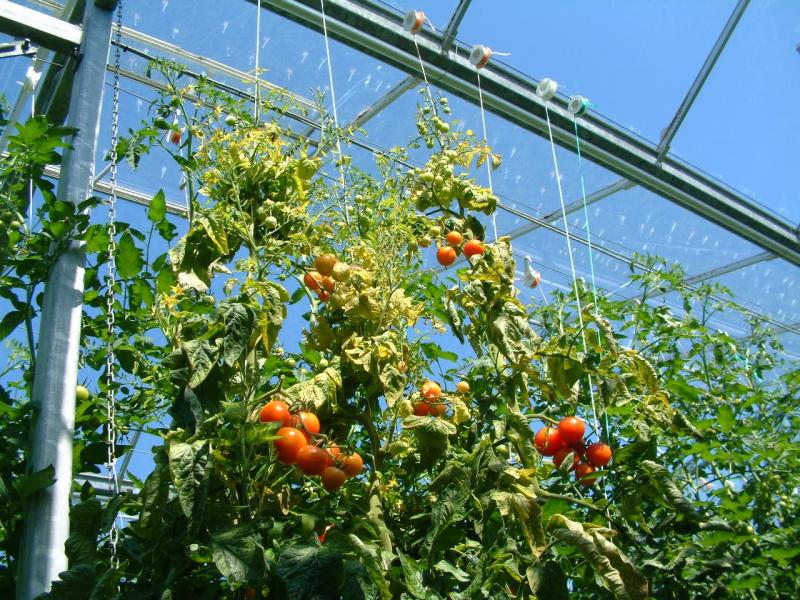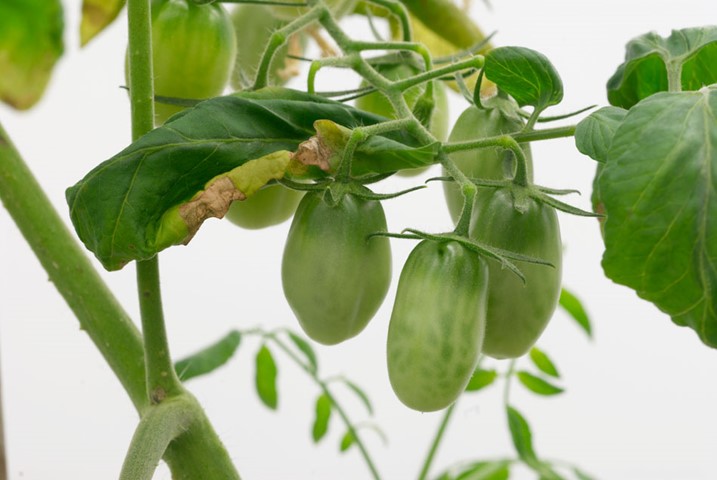Please click here to access the main AHDB website and other sectors.
- Home
- Knowledge library
- Viroids
Viroids
Viroids are the smallest known pathogen of plants, consisting of a single strand RNA molecule and differ from viruses in that they lack a protein shell.
As with virus, there has been limited AHDB research on viroids, specifically:
- Potato spindle tuber viroid, that affects tomato and can cause plant stunting and leaf death
- Columnea latent viroid that causes stunting, leaf distortion, bronzing, and a ‘crunchy’ leaf symptom
AHDB Horticulture project PC 294 ‘Detection and elimination of solanaceous viroids in tomato seeds and seedlings’ developed and validated methods for the detection of solanaceous viroids affecting tomato. This led to commercial screening services being offered by Fera.
There are many other potential viral threats and symptoms to look out for that are documented in the AHDB Crop Walker Guides. More information on emerging viroid threats to tomato production can be found from Fera. Fera recommends that any plants which are exhibiting symptoms such as chlorosis, bronzing, leaf distortion or reduced growth should be notified to the Plant Health and Seeds Inspectorate.
Potato spindle tuber viroid

Potato spindle tuber viroid was investigated following the first UK outbreak in 2003, PC 212 ‘Protected tomato: sources, survival, spread and disinfection of potato spindle tuber viroid (PSTVd)’. It concluded:
- Overall, Horticide was the most effective of seven disinfectants tested against PSTVd. Horticide, Jet 5, TSOP and Virkon S were all reasonably effective on glass. Horticide and Menno Florades were most effective on concrete. It was notable that Virkon S worked well on glass (after 5 mins contact) and not at all on concrete (even after 24h)
- The current recommended treatment for PSTVd is sodium hypochlorite at 2–3% active ingredient (20,000–30,000 ppm). This very high concentration presents problems of user safety and corrosion. Against PSTVd in dried tomato leaf sap on glass and concrete, tests showed that the concentration could be reduced to 5,000 ppm hypochlorite (0.5%) and remain fully effective after five minutes
- With the exception of avocado, all the natural recorded hosts of PSTVd are in the Solanaceae. Particular attention should be given to controlling solanaceous weeds (e.g. black and woody nightshade), as well as volunteer tomato seedlings, at any outbreak site
AHDB Horticulture Factsheet 09/06 summarised information on biology and control of this viroid and four others. PSTVd did not occur in 2004, and the outbreak was declared officially eradicated. There have since been outbreaks in solanaceous ornamentals and a case in tomatoes in 2011.
A published paper on the internet provides results on the inactivation of Potato spindle tuber viroid by various disinfectants. New control products are constantly being developed and advertised in press and grey literature. Independent testing is always recommended.
Columnea latent viroid (CLVd)

CLVd was identified for the first time in the UK in 2007, with three separate outbreaks in tomato crops (cv. ‘Santa’). The impact of this viroid on the outbreak crops was high (with between 20–60% of plants affected), and the costs were high in terms of lost yield and control measures.
The impact on plants includes stunting, leaf distortion, bronzing, and a ‘crunchy’ leaf symptom. CLVd is not an EU-listed pathogen. However, as it is closely related to PSTVd and has the potential to cause a very serious problem in tomato crops, statutory plant health action has been taken where outbreaks have occurred. There have not been any further UK outbreaks, but it has been found many times in Southern Europe and can be transmitted on foreign fruit/crates.
AHDB Horticulture project PC 294 ‘Detection and elimination of solanaceous viroids in tomato seeds and seedlings’ investigated whether there was seed transmission of the viroid but no evidence was found.
Despite following the best practice guidelines, there can always be occasions where something goes wrong on the nurser,y and a more serious pest or disease outbreak occurs.
Sectors:


